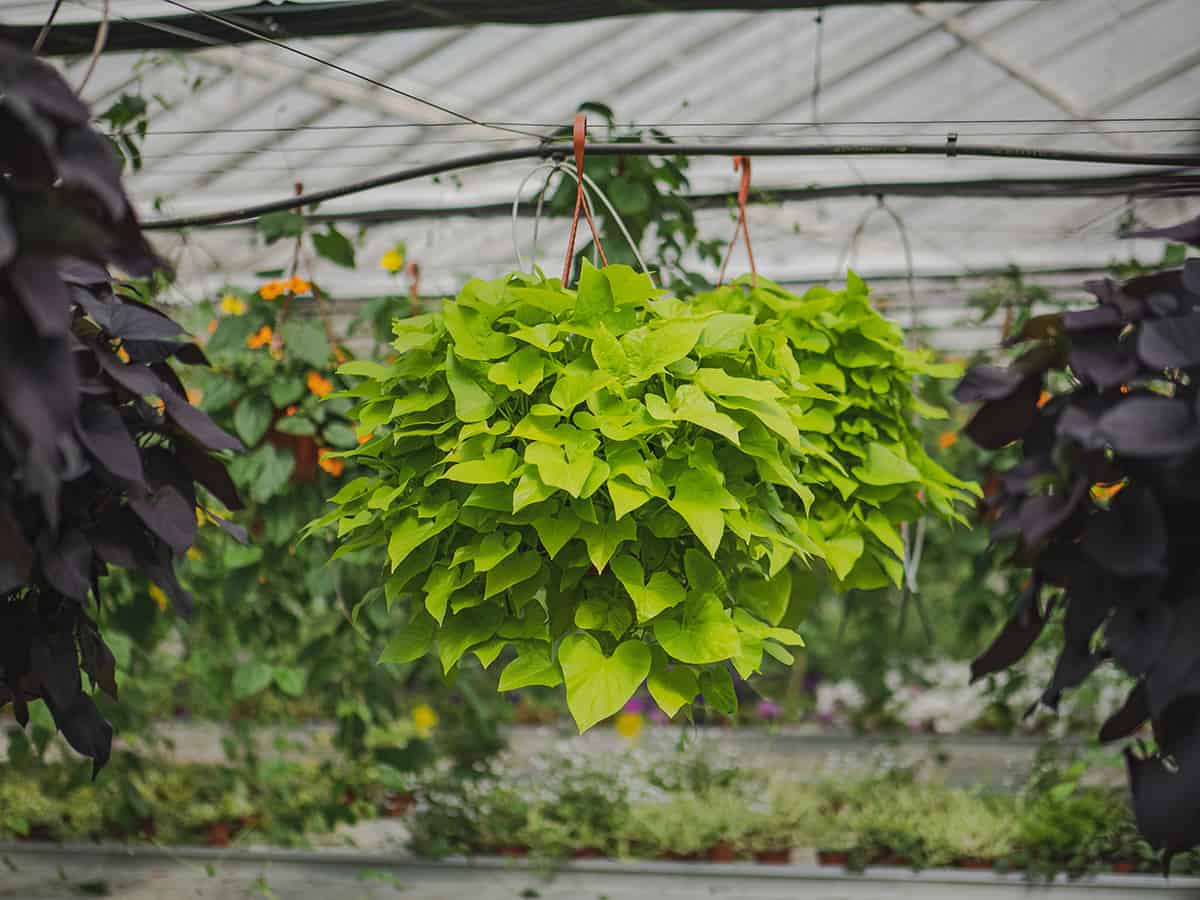Growing sweet potato vines can transform even the simplest of spaces. Whether you have a small balcony garden or a sunny spot on your kitchen countertop, these fast-growing plants provide lush foliage and vibrant color with minimal effort. Perfect for beginners or those with limited space, let’s explore how you can successfully cultivate and care for sweet potato vines in your own home.
| Common Name | Sweet Potato Vine |
| Botanical Name | Ipomoea batatas |
| Family | Convolvulaceae |
| History & Origin | Native to tropical America, widely cultivated as an ornamental |
| Plant Type | Perennial vine, often grown as an annual |
| Mature Size | Up to 20 feet long, typically 6 to 12 inches high |
| Sun Exposure | Full sun to partial shade |
| Soil Type | Loamy, well-drained, moderately fertile |
| Soil pH | Slightly acidic to neutral (5.5 to 7.0) |
| Temperature | Thrives in warm temperatures |
| Watering | Keep soil consistently moist, but not soggy |
| Fertilizing | Monthly with balanced, water-soluble fertilizer |
| Bloom Time | Rarely blooms; grown for foliage |
| Flower Color | If blooms, produces pale purple to lavender flowers |
| Hardiness Zone | USDA zones 9-11 (as a perennial) |
| Toxicity | Non-toxic to humans, toxic to pets (especially dogs) |
| Common Problems | Susceptible to whiteflies, aphids, spider mites |
Table of Contents
Light
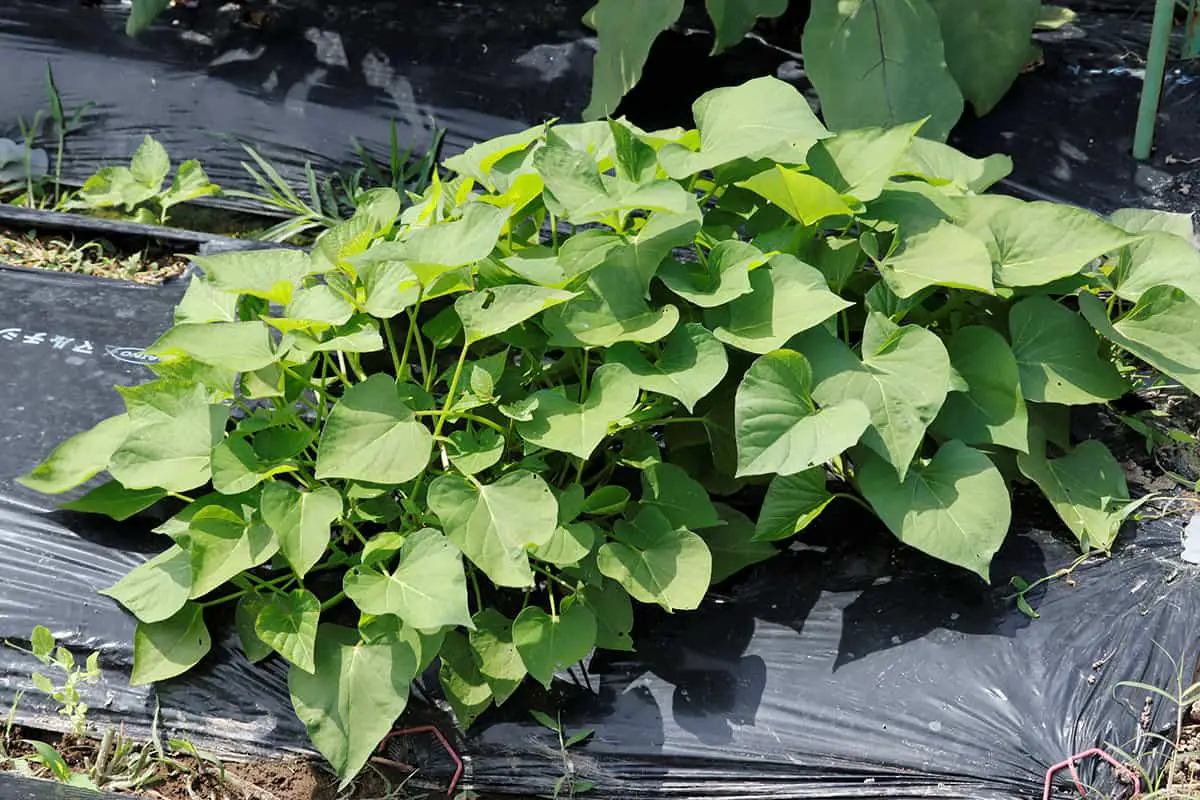
The sweet potato vine thrives in sunshine. You’ll find it needs bright light to grow well. Place your plant in a sunny location. It should receive full sun for optimal growth.
Too little light leads to leggy stems. Your sweet potato vine prefers a bright spot. It’s crucial for the development of lush foliage.
A lack of sunlight weakens the plant. Ensure your sweet potato vine gets enough sun. This maintains the vibrancy of its leaves. Choose an area with plenty of sunlight when you plant.
For indoor sweet potato vines, a south-facing window works best. This ensures they get ample sunlight throughout the day. Good light prevents the vine from stretching towards the light.
Soil
Sweet potato vine thrives in well-drained soil. Aim for a soil pH between 6.0 to 7.0 for optimal growth. You can test your soil’s pH and amend it if needed. Ensure the soil is loose and not compacted, as this allows the roots to expand easily.
Before planting your sweet potato slips, enrich the soil with compost. This adds nutrients and improves drainage. If you are starting with particularly heavy soil, consider creating raised beds or ridges. Well-draining soils warm up faster in spring, which is advantageous for this warm-loving plant.
If your garden space is limited, choose bush types of sweet potato, which are more contained than the typical vining varieties. These require less room to grow. Remember to keep the soil consistently moist, especially during dry spells. Mulching can help retain soil moisture and regulate temperature.
For growing sweet potatoes in a home garden, ridges can enhance soil warming and drainage. Despite their tolerance for a range of soil conditions, these plants prefer a sunny spot with ample room for their vines to spread. Proper soil preparation sets the foundation for a bountiful sweet potato harvest.
Water
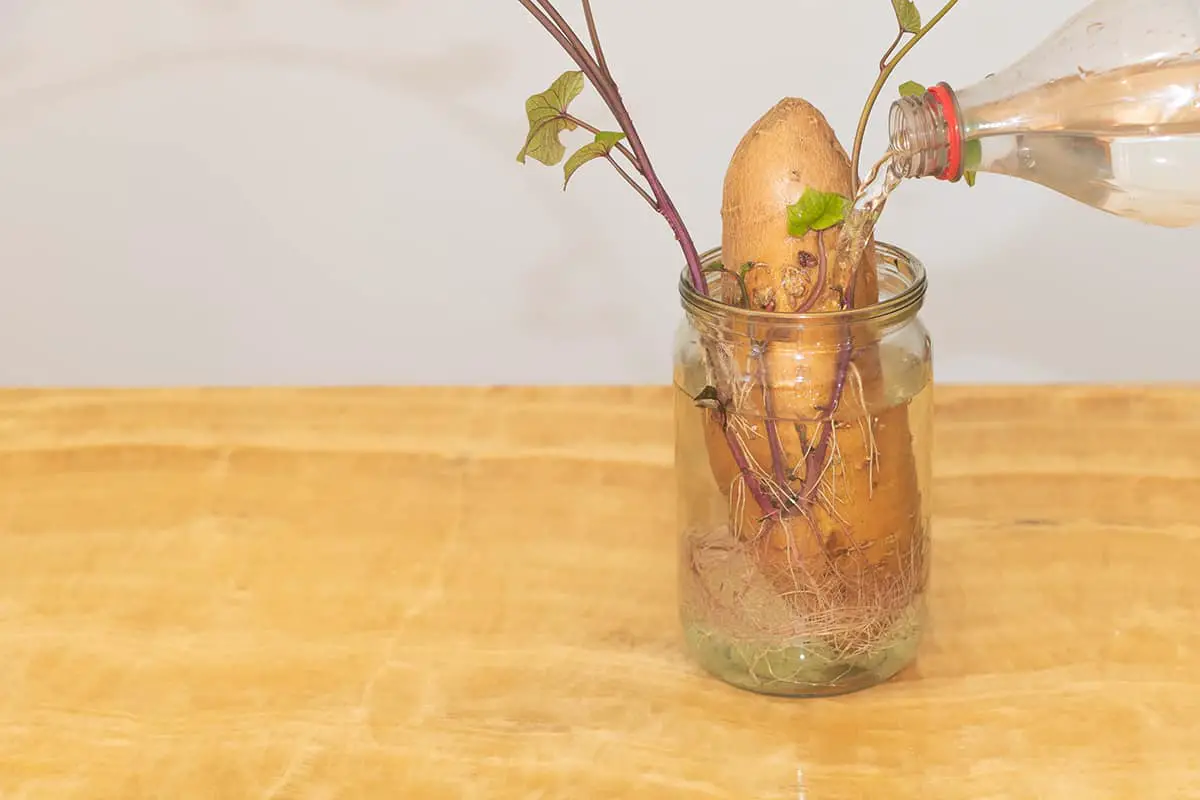
Proper watering is crucial for your sweet potato vine. This plant thrives with consistent moisture. You should keep the soil evenly moist. Overwatering or under-watering can harm the plant.
When you water your sweet potato vine, do so at the soil level. This method helps prevent foliage diseases. During hot weather, increase watering to combat the heat’s effects.
Monitor the top inch of soil for dryness. When it feels dry, it’s time to water. If the leaves wilt, this signals a need for immediate watering.
A balanced approach is key. Maintain soil moisture, but always allow for proper drainage. This protects your sweet potato vine from root rot.
Remember, the right amount of water encourages healthy growth. Your sweet potato vine will develop strong roots and vibrant leaves with consistent care.
Temperature and Humidity
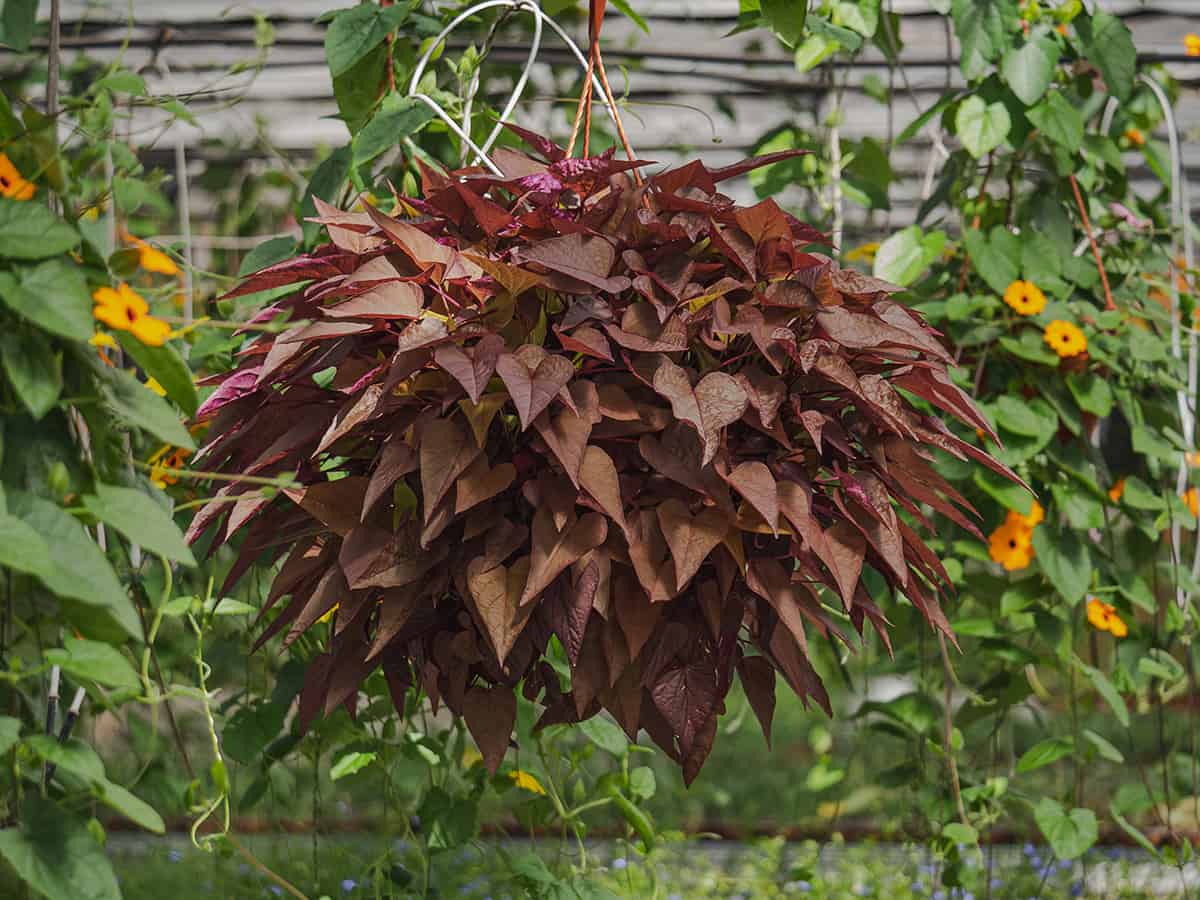
For the sweet potato vine, temperature and humidity are crucial for growth. You need warm weather to start planting. Ensure the soil temperature reaches 65°F before you introduce the vines to the garden. When the soil is warm, the sweet potato vine thrives, producing lush foliage and tubers.
During the growing season, heat is your ally. Sweet potato vines prefer temperatures between 80°F and 90°F for optimal growth. They are sensitive to cold and frost can damage them. Protecting these plants from low temperatures is key to their survival.
High humidity assists in curing sweet potatoes. After harvesting, they require a curing process involving warm temperatures and high humidity for about 5 to 10 days. This helps to heal any damage to the skin and extends their storage life. For successful curing, aim for humidity around 85% and a temperature near 85°F. After curing, maintain the storage temperature at around 60°F and ensure high humidity to keep the potatoes in good condition.
Remember to keep these vines away from cold drafts and frost. Their tropical nature means they fare well in warmth and moisture, but not in the cold. Your care in managing temperature and humidity dictates the health and yield of your sweet potato vines.
Fertilizer
Your sweet potato vine requires specific nutrients to thrive. Sweet potatoes prefer a fertile, well-drained soil. Before planting, it’s key to add compost or aged manure to enrich the soil.
During the growing season, you might consider a balanced fertilizer. This ensures your sweet potato vine gets equal amounts of nitrogen, phosphorus, and potassium. Apply in small amounts; avoid over-fertilization as it can harm the vine.
If you notice slow growth or pale leaves, your plant may need a boost. A low-nitrogen fertilizer can encourage more root development, which is important for sweet potatoes.
In sandy soils, sweet potatoes benefit from additional fertilizer. Apply a small amount every 3 to 4 weeks. This helps replace nutrients that might wash away after watering or rain.
Remember to water the sweet potato vine after applying fertilizer. This helps distribute nutrients evenly around the roots. Your care will result in a robust sweet potato vine and a hearty harvest.
Propagation
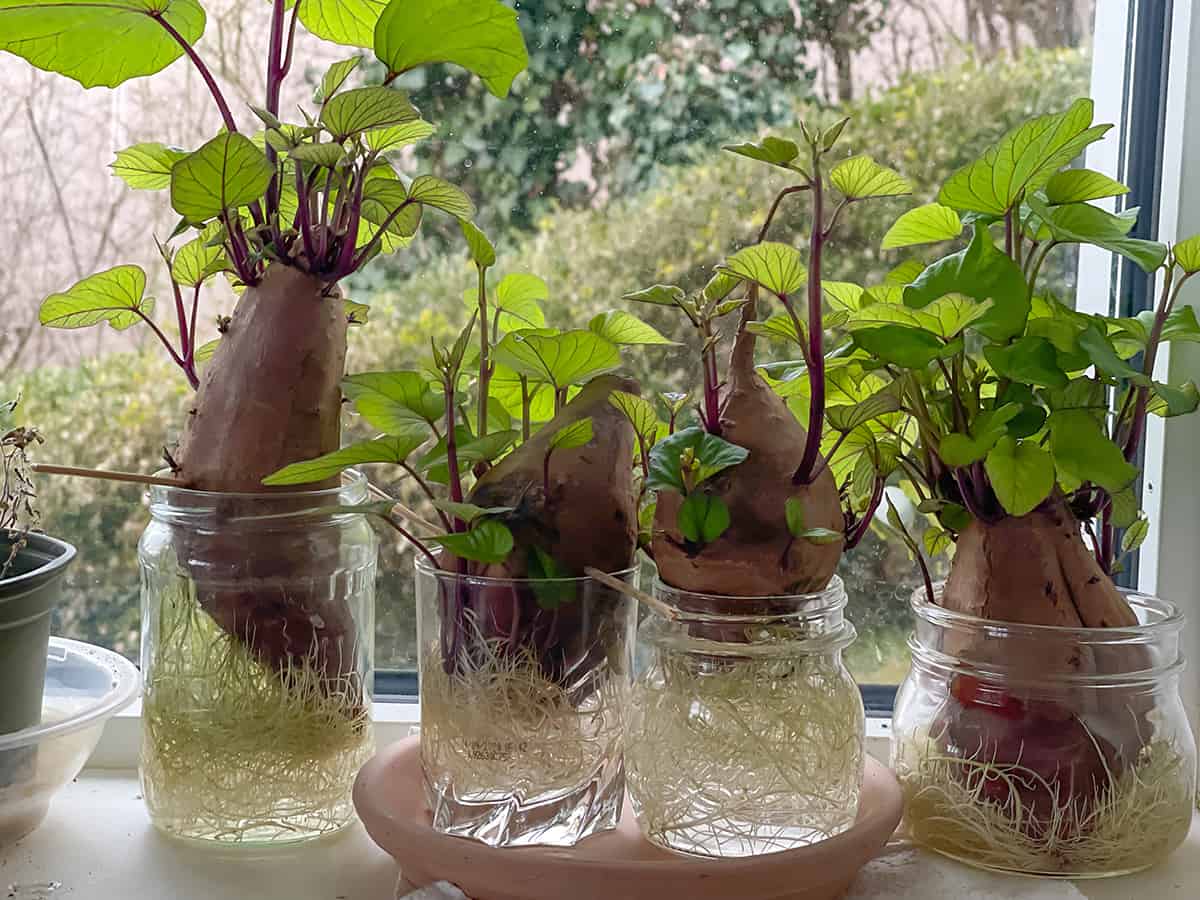
Here’s how to propagate sweet potato vines in water.
Cut the sweet potato in half. Use toothpicks to suspend it over a container of water. Ensure the bottom half is submerged. The top part stays dry.
In a few weeks, shoots called slips will emerge. When they grow a few inches, twist them off. Place these slips in water to grow roots.
Once roots appear, you can plant the slips. Choose well-drained soil and a sunny spot. Plant the slips deep enough to cover the roots. Space them about 12 inches apart.
The sweet potato vine prefers warm temperatures. Ensure you plant after the last frost. This vining plant becomes strong and spreads out once established. It needs little maintenance after that.
Pruning
Pruning sweet potato vines maintains their size and promotes a bushier growth habit. Start pruning when your vines reach about 3 feet in length. By cutting back a third of the vine, you stimulate new growth. Use clean, sharp shears to make your cuts.
Direct sunlight heals pruning wounds quickly. Prune on a sunny day to help the cuts dry. This method reduces the risk of disease. Always remove any dead or damaged stems you see to maintain plant health.
Regular pruning also helps to invigorate sweet potato vines. This ensures they stay under control. It also enhances the overall appearance of your plant. Remember to clean up any trimmings from the soil to prevent pests and disease.
Potting and Repotting
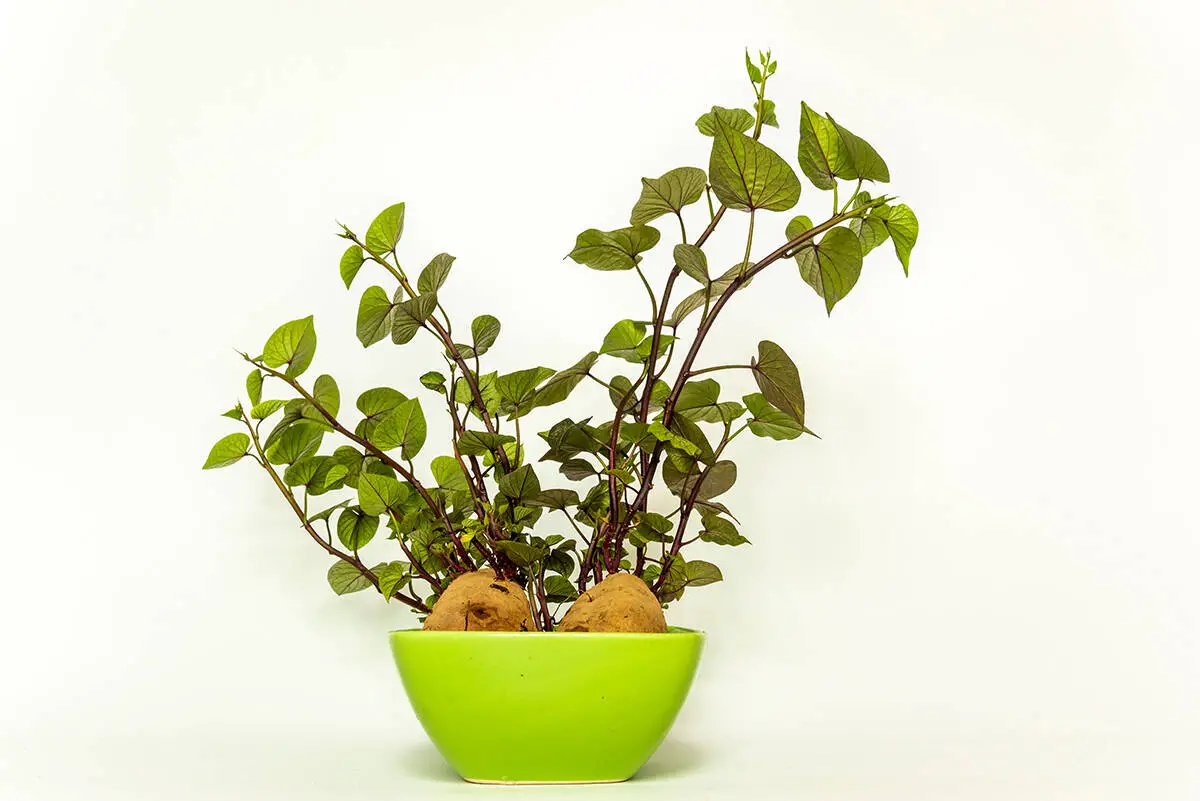
Growing sweet potato vine starts with selecting the right pot. Your pot must have good drainage to prevent root rot. A potting mix rich in organic matter is ideal for nourishment. Begin with a pot size that comfortably fits the root ball of your plant.
When roots appear at the pot’s bottom, it’s time to repot. Choose a new pot that is a few inches larger in diameter than the current one. This gives the sweet potato vine ample room to grow. During repotting, handle the root system gently to avoid damage.
Refresh the potting mix during this process. Use fresh, nutrient-rich mix to encourage healthy growth. Repotting provides the plant with necessary space and nutrients to thrive. Monitor your sweet potato vine regularly for signs that it’s time to move to a larger pot.
Common Problems & Troubleshooting
When you grow sweet potato vines, you might face some common issues. Scurf and pests like voles are frequent problems. Scurf causes small, dark patches on the potato skins but doesn’t affect the inside of the tubers. To tackle this, ensure good air circulation and use disease-free slips. With voles, which eat the roots, maintaining a clean garden free of debris helps. Surround your area with a wire mesh to deter them.
If you notice that your sweet potato vines have yellowing leaves, this could be a sign of nutrient deficiency or disease. Regular watering and proper fertilization can fix this. If the plant looks wilted, water more. When leaves turn yellow, sometimes a bit of nitrogen is needed. Turn to a balanced fertilizer, and the vines should recover.
Sweet potatoes usually grow well, but they can fall victim to root rot if overwatered. Good drainage is key. Plant in raised beds or containers if your soil is heavy or doesn’t drain properly. Water only when the soil feels dry to the touch.
Watch for pests like aphids and whiteflies. They’re small but can cause big problems by spreading diseases. You’ll commonly see them on the undersides of leaves. Mild soapy water sprays can help manage these pests. Keep the area around the plants clean to reduce the chances of infestation.
Remember, sweet potato vines are robust and can usually bounce back from problems. Recognize the signs early, and you will ensure a healthy harvest.
Sweet Potato Vine Varieties
When choosing sweet potato vines, you have a range of colorful and hearty varieties. Each brings distinct foliage and growth habits to your garden.
Marguerite or Margarita
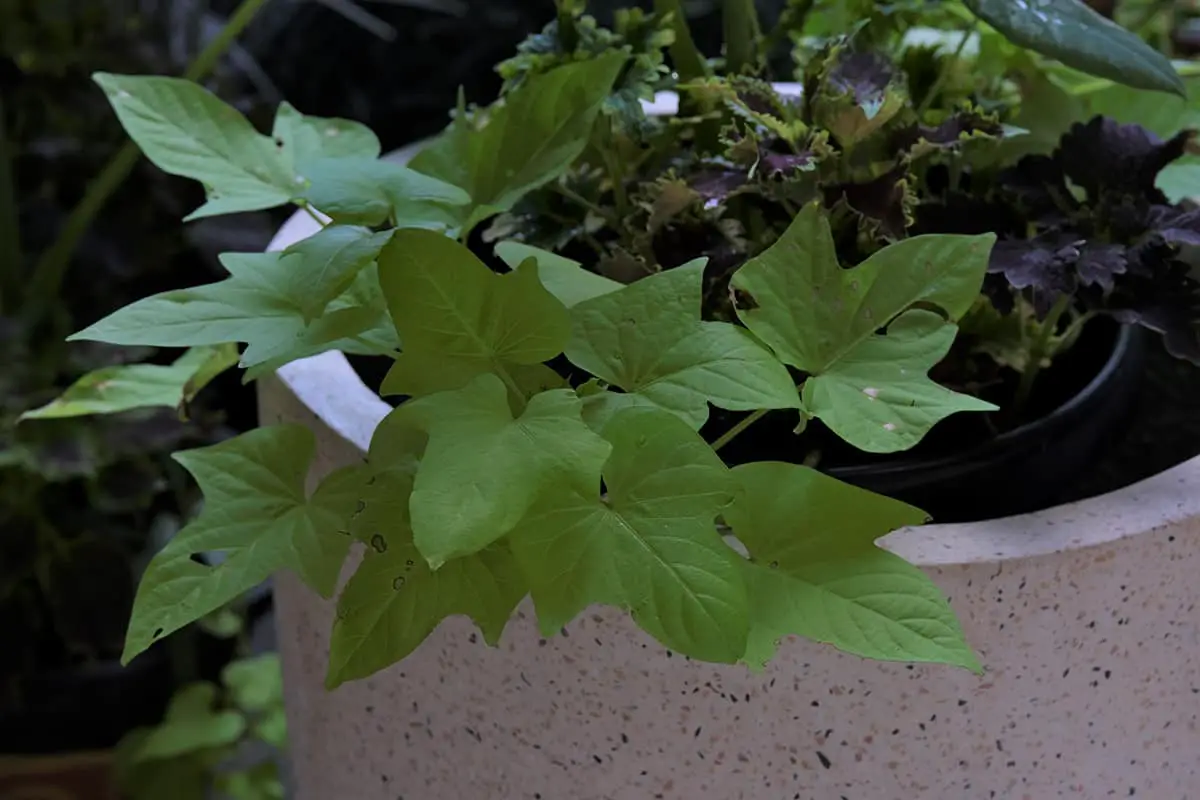
The ‘Marguerite’ or ‘Margarita’ variety is notable for its vibrant, chartreuse leaves. It brightens any space and thrives well in full sun. This fast-growing vine can quickly cover a large area.
Blackie or Black Heart
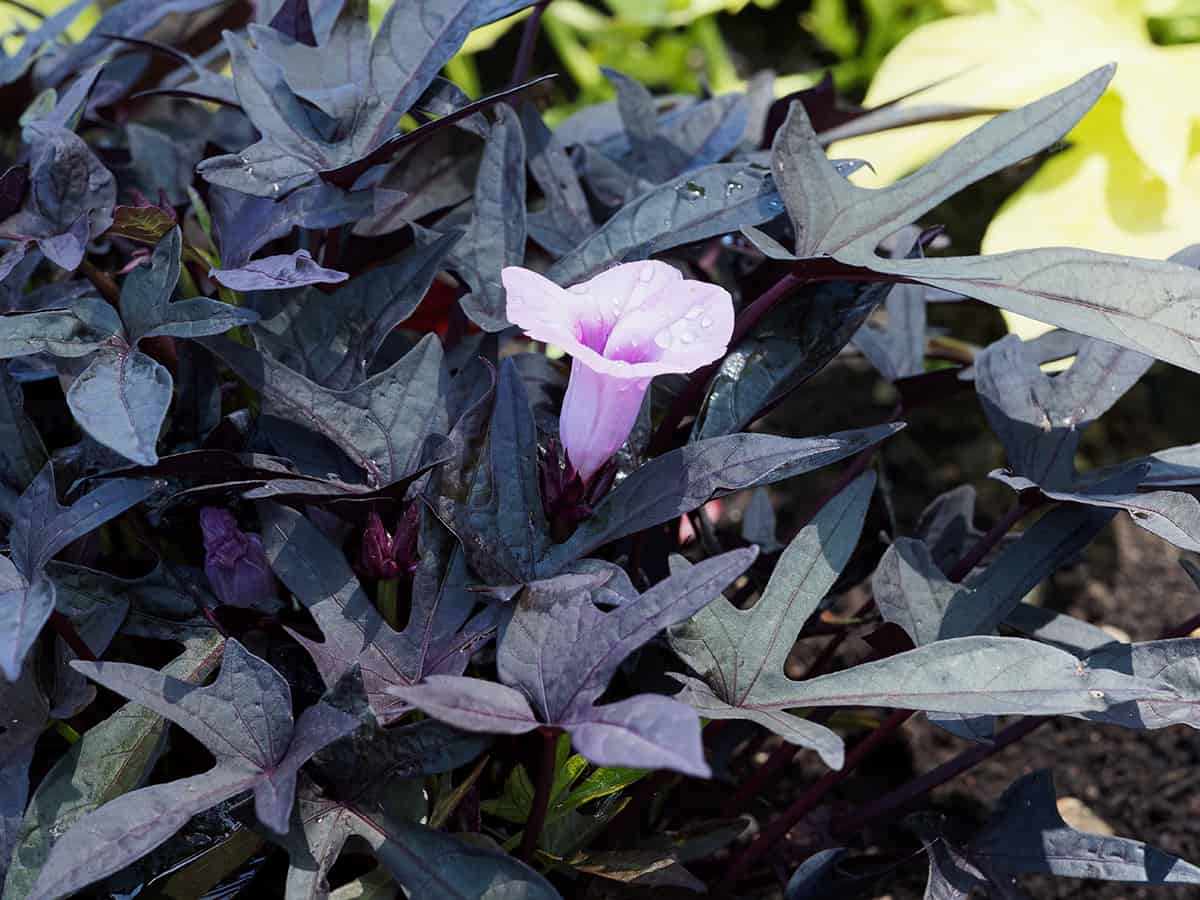
‘Blackie’ or ‘Black Heart’ offers striking, dark purple-black leaves. It creates a dramatic contrast in the garden. Its heart-shaped foliage can provide depth when paired with lighter plants.
Tricolor or Pink Frost
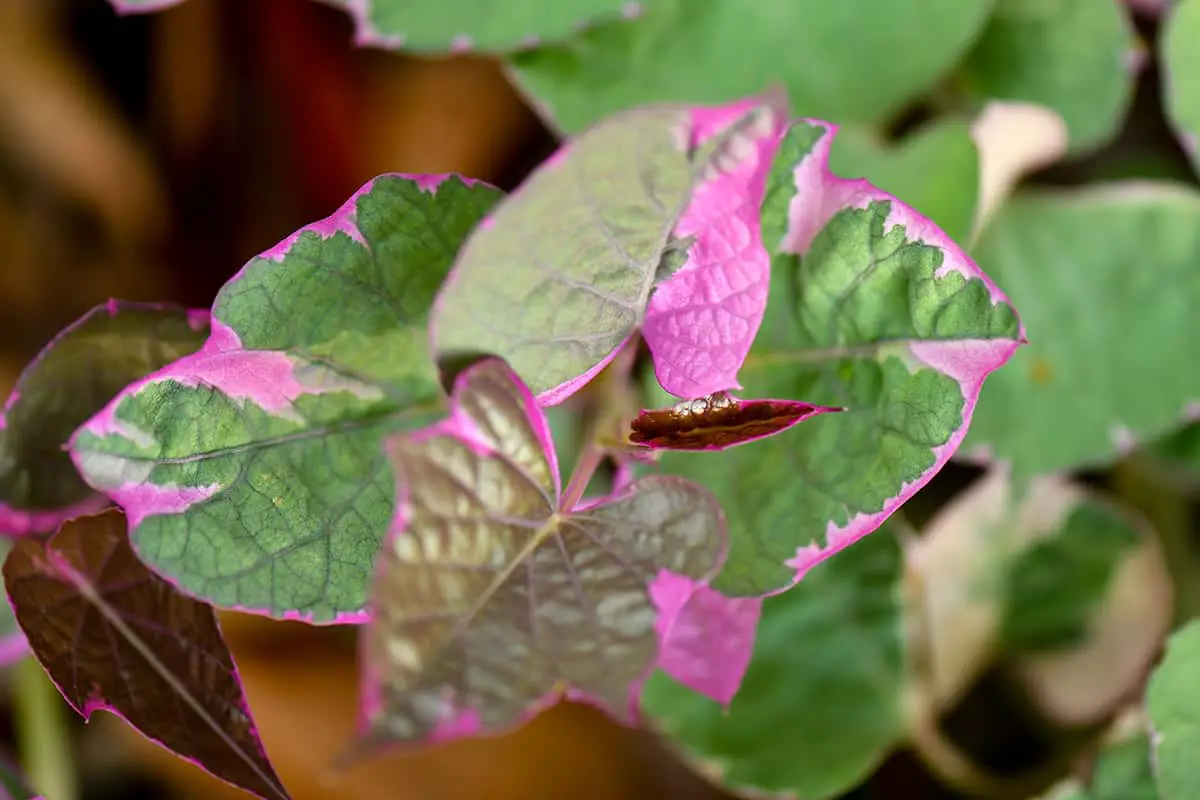
‘Tricolor’ or ‘Pink Frost’ stands out with leaves that feature shades of green, white, and pink. It’s less vigorous than other varieties but promises a stunning display in your garden.
Sweet Caroline

The ‘Sweet Caroline’ variety boasts a range of colors and leaf shapes. These versatile vines adapt well to different environments, making them a popular choice for gardeners.
Illusion Emerald Lace
With delicate, lace-like leaves, ‘Illusion Emerald Lace’ has a more refined look. Its emerald green foliage adds texture and sophistication to your plantings.
Sweetheart
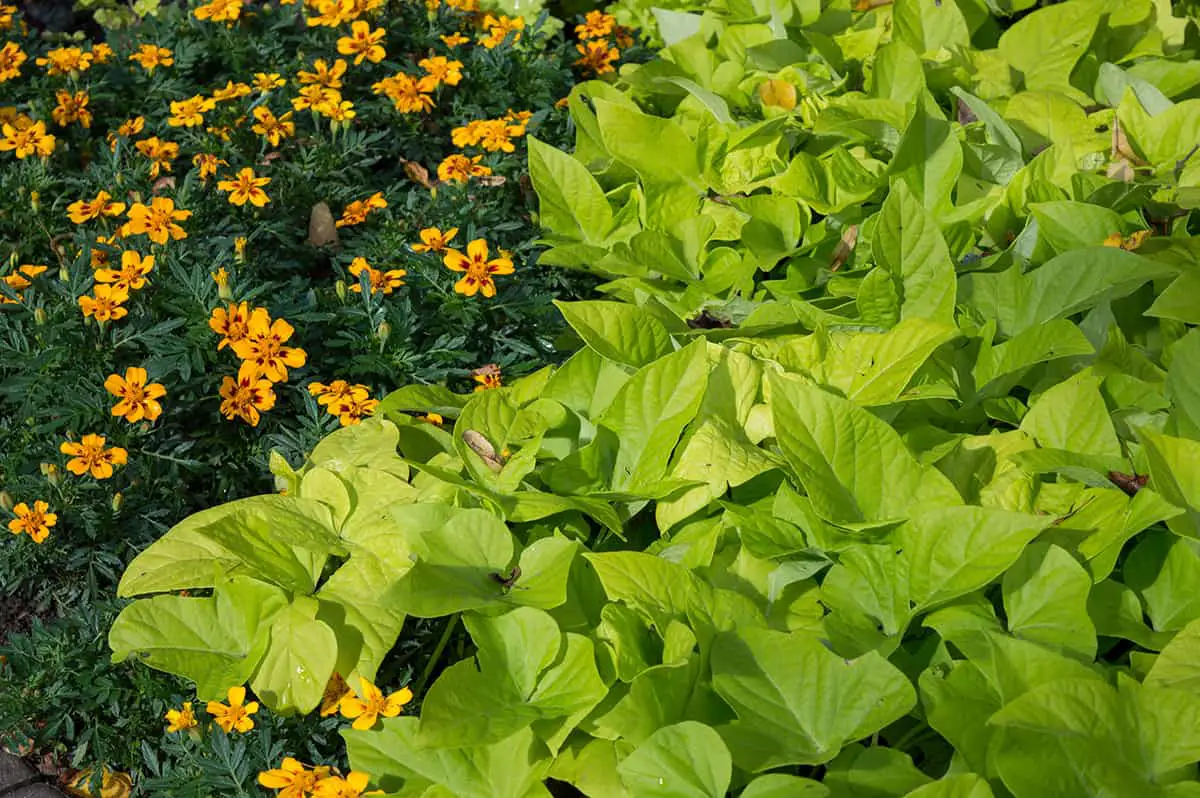
Lastly, the ‘Sweetheart’ series is aptly named for its heart-shaped leaves. It’s available in several colors, offering flexibility for your garden design. This series performs well both in the ground and in containers.
